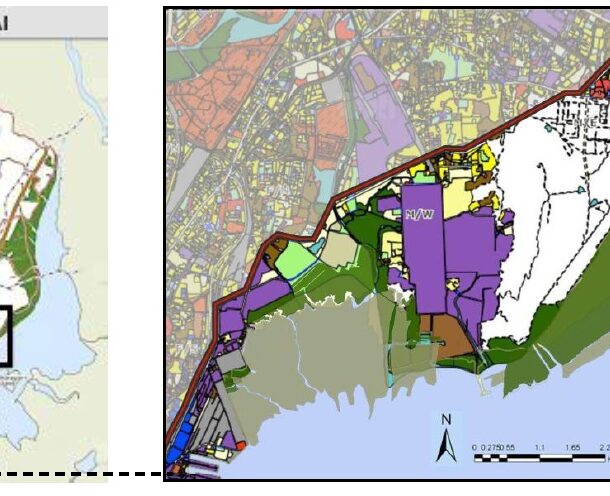
Ctrl + Alt + Del: Mitigation, adaptation and regulation strategies against sea level rise in Indian coastal cities, a case of Mumbai.
This article explores the reciprocity of the effects of climate change driven sea level rise and urbanism; while seeking out urban design as a tool of mitigating such effects at various scales in Indian urban environments. Climate change has proven to be an anthropogenic process i.e. driven by human activity. Through urban design and its human centric approach, one can find meaningful manifestations of our urban lives that can work in harmonic balance with the ecological systems and processes.

Urban Design as a tool is explored by studying the existing urban fabric of the site with parameters like open space, public realm, cultural demographics etc. This study overlaid with the understanding of the various factors leading to sea level rise will help in an efficient restructuring of the public realm to devise a design that in conjunction with larger engineering and ecological interventions will sufficiently offset the impacts of sea level rise while laying a model for the future of the urban structure in the city.
Sea Level Rise analysis and data collection:
This article takes account of data and predictions furnished by the Intergovernmental Panel for Climate Change (IPCC) , a body of the United Nations. Additionally similar climate change research organisation data and topographical data in GIS is used to create simulation models and timelines for Sea Level Rise for the city of Mumbai. These models and simulations help in establishing an ideal site for intervention within the city that not only acts as an ideal mix of interactions between land and sea, but also potential benefits of preservation of culture, land and human activities.The second section of the articles focuses on methods of technological and ecological strategies as prescribed by various climate change organisations as well as case studies of such projects by leading nations in the race against sea level rise.
Based on Earth System Models, there is great probability that the feedback between climate change and the carbon cycle will exacerbate global warming. The higher amount of carbon gases in the atmosphere will also lead to acidification of the oceans. The decrease in surface ocean pH is in the range of 0.06 to 0.07 (15 to 17% increase in acidity). There is also a projected decrease in dissolved oxygen in the ocean water. All of these effects not only destroy existing biodiversity but also makes it difficult for marine organisms to thrive.
My Vision for Mumbai’s Green Recovery:

The region around Mahim was considered as it accommodates a mixed environment of various land-sea interactions, like beach, promenade, river delta, and various rocky outcrops. The specific effect of sea level rise on the site will cause erosion at the beach edge along with loss to mangroves adjacent to the Mithi river.

Therefore, the design vision focuses on the creation of social infrastructure that allows for enjoyment as well as preservation of these ecological features, reintroduction of native vegetation to protect while creating resilient protective social spaces that will over time absorb the damaging effects of rare weather events and gradual sea level rise.
For Mumbai Matters:
Name: Kamlesh Gade
Organization: Pillai College of Architecture
Kamlesh is an architect, who graduated from Sir J. J. College of Architecture and an educator, having taught architectural theory and design at Pillai HOC College of Architecture for over 4 years. Currently at the cusp of completing his Master’s thesis in Urban Design from Pillai College of Architecture.

Waatavaran Climate Environment & Sustainability Foundation is a not-for-profit company incorporated and registered under Section 8 of the Companies Act, 2013. All donations made to Waatavaran are eligible for income tax deduction under Section 80G of the Income Tax Act.
Contact Us
REGISTERED ADDRESS
L-4/906, Swapnapurti, Sector 36, Kharghar, Navi Mumbai – 410210, Maharashtra, India
OFFICE ADDRESS
59/A, 1st Floor,
Kamgar Nagar Road,
Near Shetty Infra Services,
Kurla East,
Mumbai, Maharashtra – 400070
Email: [email protected]
Mobile: +91-8850903025 / +91-9221250399
Copyright © 2022 | Site By: Creatiwitty


